Earlier this week, Governor Jim Justice unveiled his plan for reopening West Virginia’s businesses, dubbed “The Comeback”. Among the businesses slated to open first under his plan are day care centers, restaurants, and professional services including hair and nail salons. West Virginians who work in these sectors will be among the first back to work in the face of the COVID-19 public health crisis, and are disproportionately women and people of color. These workers are more likely to live in poverty than the average West Virginia worker and often do not to have access to employee benefits like health insurance and paid sick days, a potentially dangerous scenario in the midst of a public health crisis.
Similarly, an earlier analysis found that West Virginia’s frontline workers, those who were deemed essential during the stay-at-home order like sanitation workers, bus and truck drivers, and grocery clerks, are largely women, often paid less than a living wage, and are disproportionately workers of color.
Child care providers, professional services workers, and restaurant employees, all among the first back to work in the coming days, are more likely to live in poverty than the average West Virginia worker.
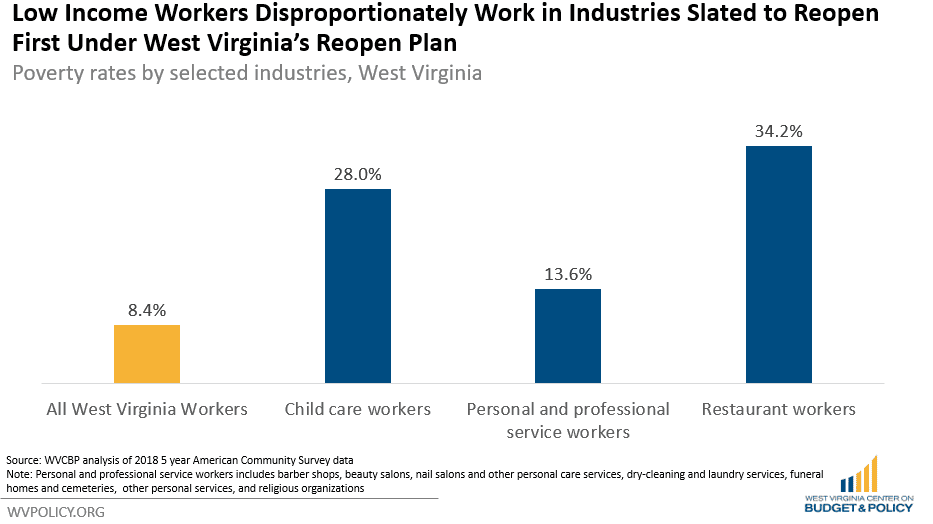
While non-white workers make up 6.1 percent of total employment in West Virginia, they are over-represented in the sectors that will be the first to reopen amid COVID-19.
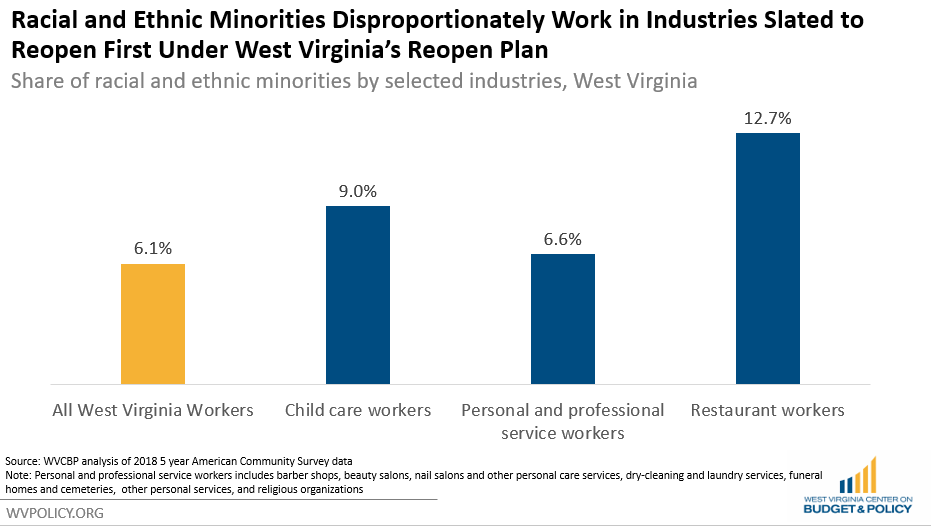
Women are over-represented in child care, professional services, food service. Women make up 9 of 10 child care providers and the majority of workers in the restaurant and personal and professional services sectors.
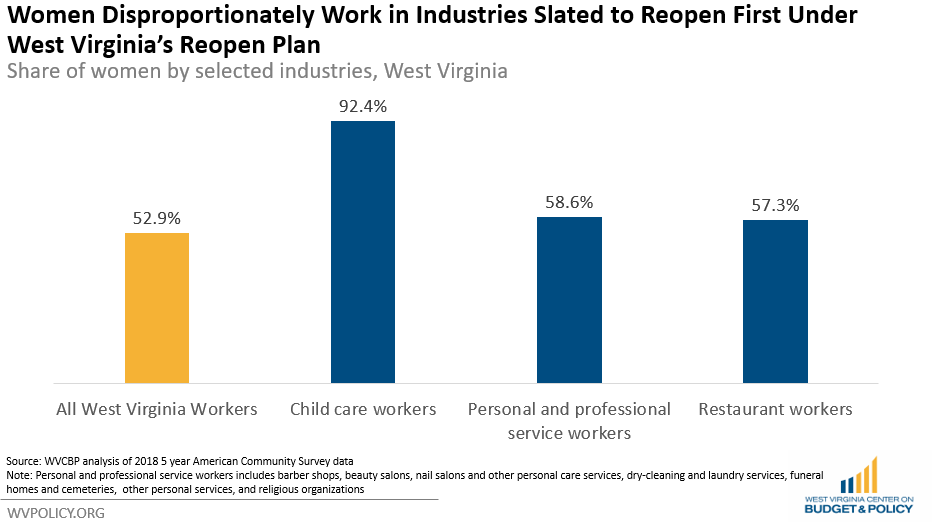
These workers will largely be returning to very low paying jobs, often less than half of the state’s average weekly wage and likely do not have access to health benefits or paid sick days.
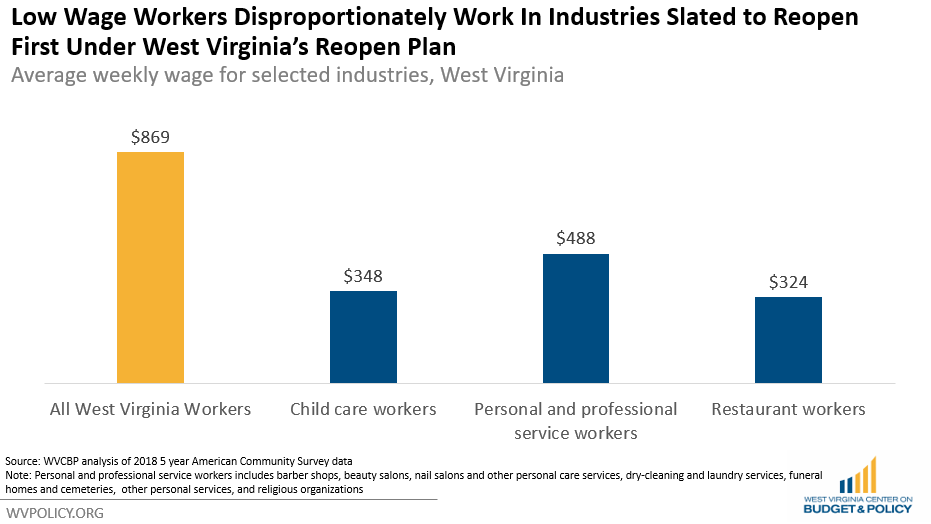
As their employers begin to reopen these businesses, many workers will face losing their unemployment insurance benefits even as they don’t feel safe returning to work. While the governor’s plan makes clear that businesses are allowed, not required, to reopen, the choice lies entirely and solely with the employer. Workforce West Virginia’s acting director Scott Adkins has announced that workers who were temporarily laid off due to COVID-19 must return to work if they are called back. According to Adkins, “quitting a job due to fear of exposure to COVID-19 without advice from a health care provider is not considered good cause for quitting”.
This puts workers who are at elevated risk of serious complications, those with caregiving responsibilities, and those whose employers fail to take proper safety precautions in a difficult situation where nearly all the power lies with the employer.
A Kaiser Family Foundation analysis found that West Virginia has the highest rate of adults in the country who are at risk of serious illness from COVID-19. Women and people of color in West Virginia are being diagnosed with COVID-19 at a higher rate than their share of the population. Black West Virginians make up 3.6 percent of the total population of the state but 7.9 percent of confirmed COVID-19 cases. Only 4.6 percent of West Virginians identify as a race other than black or white, including Asian, Hispanic/Latino, or “two or more races”, but these groups make up 11.1 percent of positive COVID cases in West Virginia. Despite the virus’ increased toll on communities of color, one early study found that black Americans are less likely to be referred for COVID testing when they come to the doctor with signs of the virus.
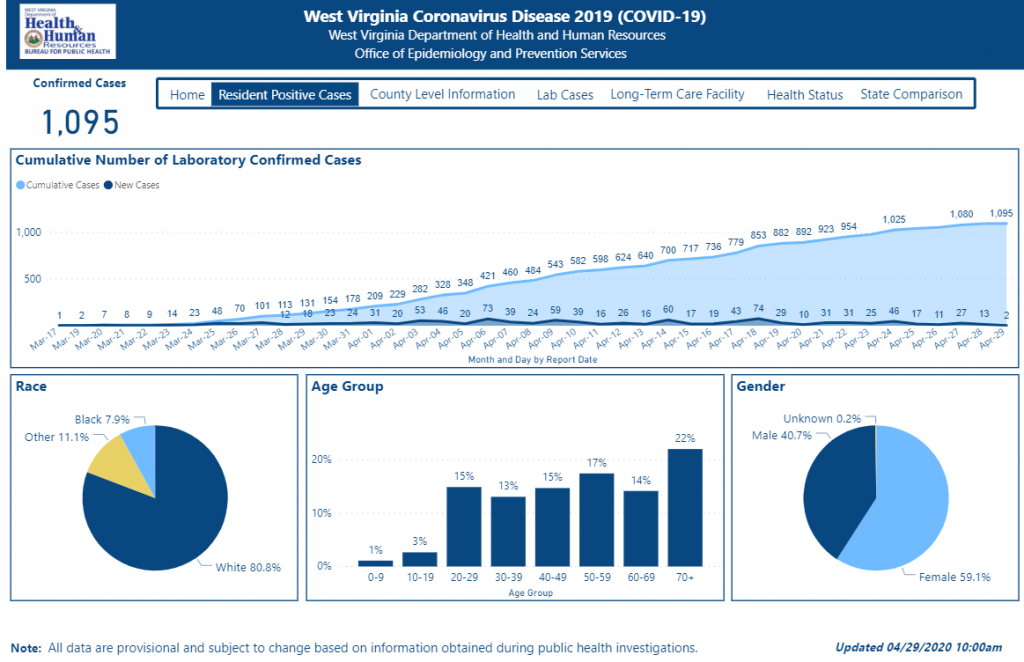
The business sectors that the governor has chosen to reopen first put those who are already at elevated risk because of health disparities, socioeconomic factors, and structural racism, on the frontlines of a pandemic while our state lacks widespread testing capability and faces shortages of personal protective equipment (PPE). Workforce West Virginia’s decision to force West Virginians who don’t feel safe back to work means they will be forced to choose between their health and their finances.
In order to ensure protections for workers, Workforce West Virginia must revise their position and interpret a broader definition of a “good cause quit” to include those who are at increased risk of illness or those who live with an at-risk individual. Additionally, workplaces that are found to lack proper safety precautions should not qualify as suitable work. Job-seekers should not be disqualified from unemployment insurance benefits for refusing to return to a workplace that does not take reasonable precautions to protect workers from communicable disease. Explicit whistle-blower protections should be laid out for workers who report unsafe work conditions. Finally, widespread testing and state-supplied personal protective equipment should be available to all businesses that are opened, rather than putting the onus on employers to provide it.
Forcing people back to work before conditions are safe will not rebound our economy. West Virginia’s “comeback” will begin when everyone, no matter what they look like or where they come from, can get the testing, treatment, and protective equipment they need to stay healthy. Until West Virginia is able to take these steps to protect our people, the state’s reopening plan will put many residents at grave risk.